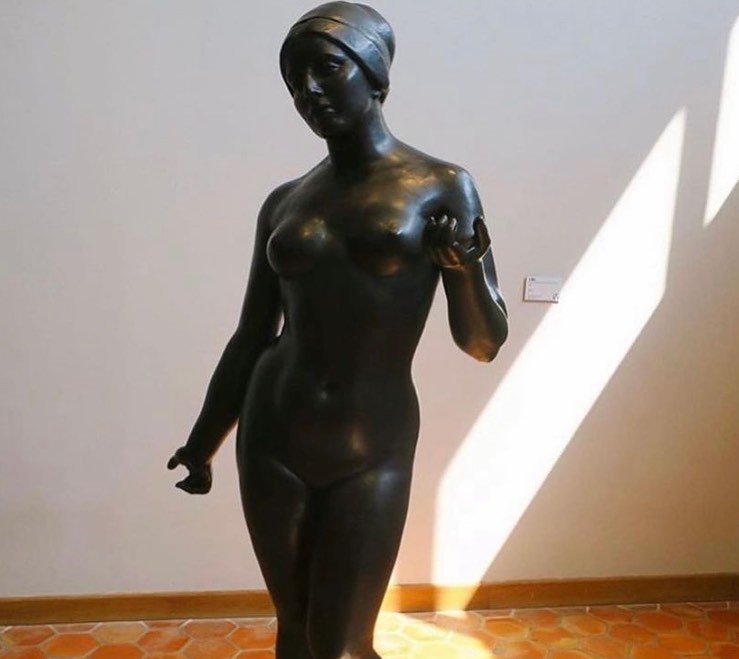The first day of summer, it felt like it would never come. The longer days lead to warm nights under the stars with glasses of rosé toasting friendships even if thousands of miles apart. Everything seems to slow down a bit in the summer as we all take our time catching those warm sun rays.
Today in Paris they celebrate the longest day of the year with La Fête de la Musique. Music is everywhere in Paris, flowing out of restaurants, in parks and in the middle of the street in every corner of the city. However, if you want to beat the summer heat in Paris, seek out the walls of the museums of Paris, where summer can always be found.
Alphonse Mucha, the Czech artist created in 1896 & 1898 two separate series depicting the season and the Arts. The sultry gaze of summer is depicted with her flowing hair resting against vines on what appears to be a warm summer day as she dangles her feet in the water. The transition of colors give you the feeling of a hazy heavy day with vines that surround her and the pop of red poppies serve as a crown to the queen of summer.
In the Musée du Louvre where summer continues with two statuette women representing the season. Two separate sets of statues, both commissioned to be placed in the gardens of the kings, Saint-Cloud and Tuileries. Here Summer is depicted as a woman holding a wheat sheaf, and draped ever so lightly in fabric. Summer is represented by the Roman goddess of the harvest Ceres with a crown of flowers and wheat. Created by Guillaime Coustou, Summer with her basket was originally in the Jardin des Tuileries, finally arriving at the Louvre in 1972. The other by Pierre Laviron is seen in also holding a wheat, was originally in the Orangery of the Parc de Saint-Cloud, finally arriving at the Louvre in 1872.
Aristide Maillol in 1911 also created a series of his bronze statues representing each of the seasons. Here l’été hands do most of the talking, her facial expression is distant, perhaps she is asking “where is my glass of rosé”, I hear ya sister!
The Louvre is filled with more than 35,000 pieces on display and there is a set of four paintings that always draw attention.
In 1573 Giuseppe Arcimboldo created four paintings based on the seasons of the year for Emperor Maximilian II of Habsburg; it was to be a gift for Augustus of Saxony. Four paintings, one for each season, created with the harvest of that season. Winter, Spring, Summer and Autumn are each very different from the last, and are one of the most popular sets of paintings in the Grand Galerie in the Musée du Louvre. Like the statues of the seasons each also represents a stage in life, spring is childhood, summer is adolescents, autumn is maturity and winter is always the old man.
The versions in the Louvre are copies of the originals that are found in the Kunsthistorisches Museum in Vienna. Summer features the best fruits and vegetables that ripen on these long sunny days. Flowers were added to the edges of the paintings in the 17th century long after Archimboldo’s death.





